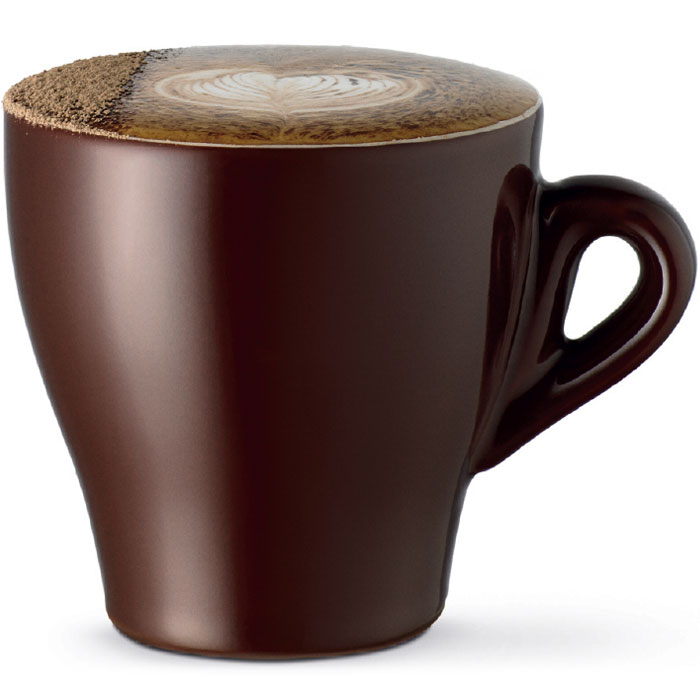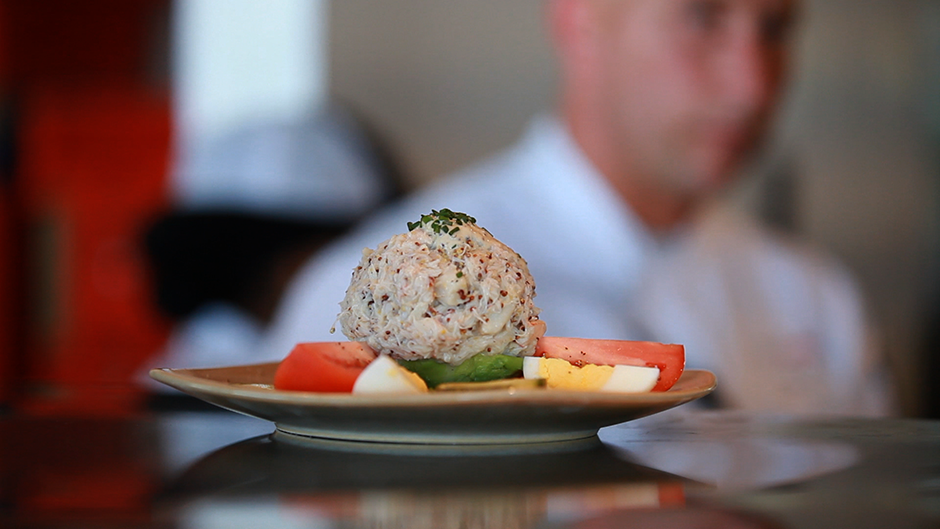A well-made cup of coffee is one of life’s good things, a happily affordable, everyday pleasure. And as foods and drinks go, it’s pretty simple to make. All it takes is roasted coffee beans, water to extract their deliciousness, a pot, and some heat. Yet coffee lovers over the centuries have come up with dozens of different brewing devices. Home coffee machines have been evolving especially rapidly in recent years, some of them costing as much as a thousand visits to a café.
Why? Well, as simple as coffee making may be, the quality of the result is exquisitely sensitive to details of the process: such things as how the beans are ground, the relative proportions of coffee and water, the temperature of the water, and the duration of the extraction. The appeal of the new generations of coffee makers is the control they offer over these critical aspects of brewing, the consistency in quality that results, and the convenience of leaving it to the machine to get it right without our vigilance.
Whether you’re making campfire coffee, dripping a cup by hand or in a machine, or pulling espresso shots, a general understanding of what you’re doing can help you do it better, and enjoy the process as well as the results.
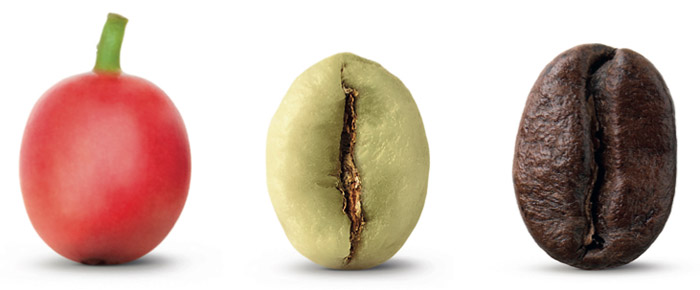
Coffee Beans: Creating Flavor
Coffee starts with the cherry-like fruits of two tree species native to northern Africa and now grown in many tropical and subtropical countries. When the coffee cherries are harvested, the seeds are removed from the surrounding pulp and then dried and exported to coffee makers all over the globe.
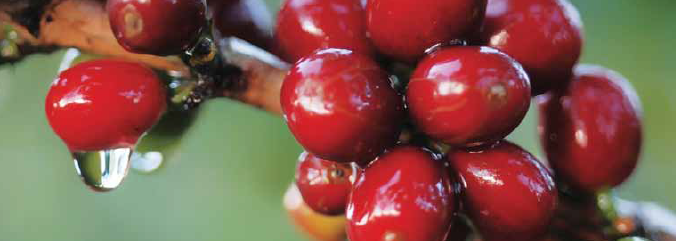
These raw coffee ‘beans’ are similar to dried pinto or soy beans: they’re hard, aroma-less packages of basic nutrients for the sprouting seedling, proteins and carbohydrates and oils. They also contain protective bitter and astringent compounds, including caffeine, that deter animals from eating the seeds along with the tasty pulp.
We make these uninteresting pale-green beans coffee-colored and delicious and grindably brittle by roasting them.
High heat breaks down a portion of the bean nutrients and defenses and causes the fragments to react with each other, a crazily complex process that generates many hundreds of new kinds of molecules. Among them are sweet and sour and bitter and savory tastes, a host of aromas, and characteristic brown pigments.
Coffee flavor is determined by the composition of the original beans, and the degree to which they’re roasted. Typical roasting temperatures can run between 375 and 425°F (190-220°C), and roasting times between 90 seconds and 15 minutes. Beans mildly roasted to a matte brown color produce a light-bodied drink with a distinct acidity, and often delicate fruity and flowery notes. More extensive roasting produces deeper-colored beans and a cup with less acidity, a fuller body, and a rounder, more generic roasted flavor. Dark roasting produces brown-black beans that are distinctly oily in appearance and have a grilled aroma, more bitterness, and a thin body.
Coffee Beans: Freshness
To make a good cup of coffee, it’s important that the beans be recently roasted, ideally within a few days of the brewing. Unlike raw beans, roasted beans are not chemically stable, and they start changing the moment the roasting stops. Some coffee connoisseurs think that flavor can actually improve over the first few days. But roasted coffee soon develops stale, rancid flavors as its unsaturated oils are attacked by oxygen in the air.
Whole coffee beans keep reasonably well for a week or two at room temperature, or a couple of months in the freezer, before becoming noticeably stale. Whole beans keep as long as they do in part because they’re filled with carbon dioxide generated during the roasting, which helps exclude oxygen from the porous interior. Grinding the beans releases the carbon dioxide as well as some desirable aromas. It also hugely increases the surface area of bean material that’s exposed to the air.
So it’s best to grind whole beans just before brewing, or if you use pre-ground coffee, to brew within a few days of the grinding.
Vacuum-packed beans and grounds are protected from oxygen and last longer, but be sure to check the date on the package. Even with vacuum-packed coffee, fresher is better. Before using frozen coffee, warm the unopened package up to room temperature first, so that no flavor-damaging moisture will condense on the beans when you expose them to the air.

Grinding: Even Particle Size
When we brew coffee, we expose particles of the coffee bean to water to extract the components that contribute flavor, body, and color, while trying to minimize the extraction of unpleasantly bitter and astringent substances. The extraction process is influenced by a number of different factors. First among them is the size of the coffee grounds. The smaller the particle, the faster it will give up its contents to the water.
No matter what the brewing method and its optimal grind, it’s important that the grind be reasonably even.
In a mixture of fine and coarse particles, the fine ones will give up their desirable components quickly and start to cause bitterness while the coarse ones still have good flavor trapped inside.
There are two standard types of coffee grinder. The rotating blade of inexpensive electric propeller grinders smashes all the bean pieces indiscriminately until it’s stopped, so coarse and medium grinds end up containing some fine powder. More expensive burr grinders, which may be electric or manual, crush the beans between adjustable grooved plates, and allow bean fragments to fall free of the mechanism as soon as they’re small enough. Burr grinders give a more even particle size.
Brewing: Water Temperature and Extraction Time
While the coffee grind determines how easily water can get into the particles and extract their contents, the actual process of extraction is controlled by the water temperature and the brewing time. The hotter the water and the longer the brew, the more completely solubles are extracted from the coffee particles. A balanced flavor results when between 20 and 25% of the bean materials are extracted into the water. With a lower extraction the brew is bland and sour; a higher extraction tends toward harshness.
Coffee can be and is brewed in room-temperature water, but such cold-brewing takes hours.
The best standard coffee is brewed with water between 180 and 205°F, or 80 and 96°C.
At the upper end of that range, water extracts both more aromatics and more bitterness. At the lower end, the coffee comes out smoother but less fully flavored.
The extraction time is the easiest variable to adjust during the brewing, and it depends mainly on the fineness of the grind. The coarse grounds used in plunger pots are usually extracted for 4 to 6 minutes, drip and stovetop devices extract medium grounds for 2 to 4 minutes, and espresso machines extract fine grounds for about 30 seconds.
Brewing: Coffee Strength
Coffee strength — the concentration of coffee solubles in the brew, and the intensity of flavor — is determined primarily by the proportions of ground coffee and water. Different brewing methods call for different proportions, and the coffee strength we aim for in any one of them is a matter of taste. At the extremes, typical American drip coffee is made with a ratio of one part coffee to 15 parts water by weight, while the ratio for espresso is 1 to 5 or even higher.
It can be fun to experiment in order to find the proportion of coffee to water that you prefer.
You’ll find that it’s better to start with a brew that’s too strong rather than too weak, because strong but balanced coffee can be diluted with hot water and remain balanced. Weak coffee tastes watery and acidic and can’t be improved.
To brew consistently, it’s best to measure the coffee by weight rather than volume. Coffee scoops may be more convenient than using a scale, but they’re not as reliable. A standard scoop can contain anywhere between 8 and 12 grams of coffee depending on the grind and how compacted it is. And an additional gram or two can make a noticeable difference in flavor. A typical amount of coffee for an 8-ounce cup of drip coffee is 16 grams.
Espresso: Super Extraction
Espresso coffee stands apart from all the other coffee brews. It contains three to four times more coffee-bean extract, including a fine emulsion of the bean oils that other methods largely leave behind in the grounds. The result is an intense, rich, full-bodied brew whose flavor persists in the mouth long after it’s been swallowed.
A distinctive mark of a well-made espresso is the crema, a creamy foam created by the carbon dioxide gas from fresh and freshly ground beans and a variety of bubble-stabilizing coffee components.
True espresso coffee is made with a machine that heats water to around 200°F, 93°C, and then pushes it through very fine grounds with the force of nine atmospheres of pressure, or well over 100 pounds per square inch, by mechanical or hydraulic means. The pressure emulsifies the coffee oils into the brew. Inexpensive approximations of espresso machines extract with boiling water and relatively weak steam pressure, and don’t produce as balanced and delicious a result.
Milk in Coffee Drinks
Coffee is frequently partnered with milk, which moderates coffee’s strong flavor by diluting it and binding some of the astringent and bitter components. And milk provides its own flavor, notably sweetness from the milk sugar lactose. A quarter-cup or 60 ml contains the equivalent of almost a teaspoon of sugar — which is why you don’t need to add sugar to a café au lait. Milk proteins and fat both contribute body, so milk drinks also feel more substantial and lingering in the mouth.
Milk is also good at forming a persistent foam that can lend an appealing body, both full and light, to cappuccinos and lattes. Milk bubbles get their staying power from heat, which unwinds some of the milk proteins and encourages them to form a delicate but solid network around the bubbles, a kind of structural reinforcement.
The most common and well-honed method of foaming milk is with the steam wand on an espresso machine, but there are other and simpler ways.
Steam itself doesn’t form bubbles; it’s water vapor and simply condenses into liquid again when it hits the cooler milk. Instead, the steam wand is designed to inject air into the milk to form bubbles, and the steam does the heating to stabilize them. You can improvise a milk foam simply by shaking a little cold milk in a jar until it foams, and then heating the jar briefly in the microwave to set the proteins in the bubble walls.
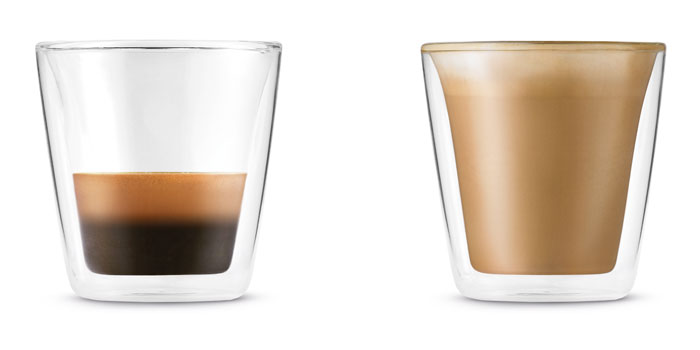
Serving Coffee
Freshly brewed coffee is best enjoyed immediately. Its flavor is evanescent, evolves as it cools, and suffers from further heating, which drives off aroma, increases acidity, and develops harshness. Preheat cups so that they don’t cool the coffee too quickly. If you want to serve a pot of coffee over an extended time, brew or transfer it into a preheated insulated container. Don’t keep it hot by continuing to heat it. The gentlest way to reheat cold coffee is to warm it slowly in the microwave on low power, taking a few minutes per cup.

